How to Prepare Your Car for Towing
Method 1 of 3:
Considering Your Towing Options
-
 Choose the best towing option for your situation. There are three basic options for hauling your car; it's up to you to determine which method best fits your situation. The three options covered in this article are: using a trailer, using a dolly, or using a tow bar.
Choose the best towing option for your situation. There are three basic options for hauling your car; it's up to you to determine which method best fits your situation. The three options covered in this article are: using a trailer, using a dolly, or using a tow bar.- The other option that is not listed in the following steps is using a strap, rope, or chain to pull your broken down car to the shop. This method calls for someone sitting in the car, working the turn signals, steering wheel, and brake pedal. If it's not an emergency, or if you have further than a few blocks to go, do not try this method, as it's just not safe.
- If you have to tow your car in this manner, just remember to let the towed car handle the brake loads, and be sure to avoid letting your rope, strap, or chain get too much slack. You also need to remember to put on your hazard lights.
-
 Use a trailer. The first, and likely least difficult, option is to use a trailer that allows you to raise all four wheels of your towed vehicle off of the ground. These are pricey to buy, but your local moving van service might have something you can rent. To use the trailer:
Use a trailer. The first, and likely least difficult, option is to use a trailer that allows you to raise all four wheels of your towed vehicle off of the ground. These are pricey to buy, but your local moving van service might have something you can rent. To use the trailer:- Drive, push or winch your car up onto the trailer. Lock your car down; there are generally strong nets you should place over the front wheels, and chains to ratchet down your rear axel.
-
 Think about using a tow dolly. The next option is a tow dolly, which lets you get your front wheels up off the ground, letting the rear wheels roll on their own. These are especially handy for front wheel drive vehicles. As with trailers, drive, push or winch your car up onto the dolly. Wrap your wheels in the nets, and ratchet them down a little tighter than you think you need to. There may be a chain for your front axles, or a hook, even, depending on the dolly.
Think about using a tow dolly. The next option is a tow dolly, which lets you get your front wheels up off the ground, letting the rear wheels roll on their own. These are especially handy for front wheel drive vehicles. As with trailers, drive, push or winch your car up onto the dolly. Wrap your wheels in the nets, and ratchet them down a little tighter than you think you need to. There may be a chain for your front axles, or a hook, even, depending on the dolly.- If you are using the dolly to haul rear wheel or four-wheel drive vehicles, you might want to disconnect the drive shaft, especially for long distance travel.
- The other option is to leave the towed car in neutral; for automatics, there is a consensus that this is a bad idea for long hauls, but when speaking of standard or 'stick' transmissions, opinions vary as to the necessity of disconnecting the drive shaft.
-
 Try using a tow bar. The tow bar is a common, popular choice for RVers and toy haulers. It is often chosen for long distance travel. When using a tow bar, all four of your wheels will be left on the ground. They are much cheaper to buy than a trailer or dolly, and can be left on your towed vehicle (you'll see them on jeeps and buggies a lot) as a permanent part of the car's setup.
Try using a tow bar. The tow bar is a common, popular choice for RVers and toy haulers. It is often chosen for long distance travel. When using a tow bar, all four of your wheels will be left on the ground. They are much cheaper to buy than a trailer or dolly, and can be left on your towed vehicle (you'll see them on jeeps and buggies a lot) as a permanent part of the car's setup.- The way you connect your tow bar to your car will depend on the model of bar that you use. Some tow bars connect to the frame of your car, while others hook to the front bumper. When you get to your destination, simply unhook the bar and you're good to go.
-
 Find out about the other types of tow bars. Tow bars also come in a variety that stays coupled to your towing hitch, and connects to the towed car via "D-Rings". It is put on in the same way, but can be removed more easily from the towed car, and you can generally leave the d-rings on without impacting your car's good looks if you are just moving it occasionally.
Find out about the other types of tow bars. Tow bars also come in a variety that stays coupled to your towing hitch, and connects to the towed car via "D-Rings". It is put on in the same way, but can be removed more easily from the towed car, and you can generally leave the d-rings on without impacting your car's good looks if you are just moving it occasionally.- The third variety, commonly available from a moving company, just uses straps and pads to create a temporary hitch-able connection, which can be completely removed when you are done with your move, and requires no alterations to your towed car. Cushions press up against your bumper, straps wrap around your front axle or undercarriage, which results in a fairly solid, snug connection to your towing rig.
Method 2 of 3:
Dealing with Lights and Steering
-
 Check the lights on your trailer or tow dolly before towing. When using a trailer to tow your car, you probably don't have to worry about lights. Make sure before hand that your towing vehicle has a compatible tow wiring receptacle, and have a buddy help you check to make sure all the trailer lights work, including running lights, brake lights, and turn signals. For legal reasons make sure the license plate is illuminated as well.
Check the lights on your trailer or tow dolly before towing. When using a trailer to tow your car, you probably don't have to worry about lights. Make sure before hand that your towing vehicle has a compatible tow wiring receptacle, and have a buddy help you check to make sure all the trailer lights work, including running lights, brake lights, and turn signals. For legal reasons make sure the license plate is illuminated as well.- If your trailer lighting receptacle doesn't match the pigtail on the trailer side, don't fret. Adapters of all kinds and variations can be found through your moving company, or auto parts store.
- Tow dollies also have lights as a rule, and will connect to your car's light in the same manner. Some even have little external lights which can be magnetically mounted to your car's bumper for improved visibility.
-
 Use magnetic lights or wire your RV or truck lights to your car. If pulling your car directly with a tow bar, you have a couple options. The magnetic lights mentioned in the previous step can be connected to your tow vehicle's trailer lighting receptacle and placed on the trunk or bumper of the towed car. This helps other cars to see when you are turning or braking.
Use magnetic lights or wire your RV or truck lights to your car. If pulling your car directly with a tow bar, you have a couple options. The magnetic lights mentioned in the previous step can be connected to your tow vehicle's trailer lighting receptacle and placed on the trunk or bumper of the towed car. This helps other cars to see when you are turning or braking.- You can also find wiring kits which let you plug your trailer lights directly into your car, letting you use it's own drive lights to do your signaling. These differ somewhat according to which make, model and year your car is, and can be as simple as plugging in to an available pigtail connector, or may mean some actual re-wiring of your car. Run an online search to determine what kind of lighting your specific car needs.
- No matter which method is used, leave your car battery on and leave your running lights on if rolling at night, just for the added visibility. This, however, is not a legal requirement.
-
 Use your hazard lights as a last resort. If you can't find or get your hands on external towing lights, or cannot hook up the car's lights to act as trailer lights, leave the battery turned on, and run your hazards. Remember to stop every so often and run the engine on your towed car to keep the battery alive.
Use your hazard lights as a last resort. If you can't find or get your hands on external towing lights, or cannot hook up the car's lights to act as trailer lights, leave the battery turned on, and run your hazards. Remember to stop every so often and run the engine on your towed car to keep the battery alive.- This method is fine for a one time emergency day trip but you'll want real trailer lighting if going more than a few miles, and more than once or twice a year.
- Sooner or later you will encounter a state patrolman with no tolerance of such shenanigans, and it is absolutely necessary for your safety and the safety of those you share the road with to maintain as much visibility as possible.
-
 Figure out whether you need to lock your steering wheel. If you are towing your car on a trailer or dolly, all you need to do is lock your steering wheel after you have your front wheels strapped down to the trailer or dolly.
Figure out whether you need to lock your steering wheel. If you are towing your car on a trailer or dolly, all you need to do is lock your steering wheel after you have your front wheels strapped down to the trailer or dolly.- If pulling your car while on the ground (via a tow bar), leave the steering wheel unlocked, so your front wheels can turn a little going around curves. Again, there are some differing opinions, but most people secure the wheel loosely with bungee cords or a bit of rope, to prevent the front wheels from turning too much and getting stuck in a sideways position.
- It's also a good idea when towing in this manner to avoid backing up. Front wheels can turn sideways when going backwards and can be damaged in this manner.
Method 3 of 3:
Disconnecting the Axles
-
 Consider using a special towing device. Check with your owners' manual to see what your manufacturer has to say about towing options, to help you decide which methods are compatible and most appropriate for your vehicle. Consider using one of the following devices if you do a lot of car-hauling.
Consider using a special towing device. Check with your owners' manual to see what your manufacturer has to say about towing options, to help you decide which methods are compatible and most appropriate for your vehicle. Consider using one of the following devices if you do a lot of car-hauling.- One is a lube pump, which provides lubrication to the automatic transmission, in the same way as normal operation of the car would. This helps to prevent damage to the transmission.
- A drive shaft coupling device can be installed on a rear-wheel-drive vehicle. Instead of manually disconnecting and removing the drive shaft, this device lets you pull a lever to disconnect your drive shaft without having to get your hands dirty.
- An axle-lock is a device not at all dissimilar to the locking hubs found on older 4X4 vehicles, which can allow you to disconnect your wheels from their drive axles, and thus from the transmission.
-
 Decide to disconnect the axles. This will require getting a little dirty, but if you want to tow your car on its own wheels, it is important to do this. You can also have a mechanic do this for you if you are not confident in your abilities.
Decide to disconnect the axles. This will require getting a little dirty, but if you want to tow your car on its own wheels, it is important to do this. You can also have a mechanic do this for you if you are not confident in your abilities.- The following steps cover how to disconnect the axles by yourself.
-
 Get under your car. Raise it up if you must, being careful to leave it in park, or with the parking brakes on, wheel chocks or something to keep it from rolling off your jack or ramps. Bring your:
Get under your car. Raise it up if you must, being careful to leave it in park, or with the parking brakes on, wheel chocks or something to keep it from rolling off your jack or ramps. Bring your:- Ratchet set, or wrenches, some spray lube, and a bungee cord, a ratchet strap or some rope when you go under your car.
-
 Locate the drive shaft(s), and find where it connects to the differential you want disconnected. Then find the u-joint and on the end of that, the yoke, where four bolts can be found that hold the drive shaft to the differential housing.
Locate the drive shaft(s), and find where it connects to the differential you want disconnected. Then find the u-joint and on the end of that, the yoke, where four bolts can be found that hold the drive shaft to the differential housing. -
 Use your strap or bungee cord to secure the drive shaft to your undercarriage. Don't use your exhaust pipes or anything loose; look around to find something solid to connect it to. Don't tighten this up just yet, but make sure to secure it so that the drive shaft doesn't fall on to you when you loosen it.
Use your strap or bungee cord to secure the drive shaft to your undercarriage. Don't use your exhaust pipes or anything loose; look around to find something solid to connect it to. Don't tighten this up just yet, but make sure to secure it so that the drive shaft doesn't fall on to you when you loosen it. -
 Remove the four bolts. The wrench or ratchet size you need will vary depending on the make and model of your car, and you might need to knock some dirt off and apply some spray-on lubricant to get them to come loose.
Remove the four bolts. The wrench or ratchet size you need will vary depending on the make and model of your car, and you might need to knock some dirt off and apply some spray-on lubricant to get them to come loose.- When the last bolt comes loose, use extra caution, as the drive shaft will fall unless it has been properly secured by your bungee chord.
-
 Push the drive shaft up as far as possible. Adjust your bungee or tighten the strap so there is as little wobble or play as possible. Don't force anything; you just want it up and out of the way and secure enough not to flop around or fall while you are towing the car.
Push the drive shaft up as far as possible. Adjust your bungee or tighten the strap so there is as little wobble or play as possible. Don't force anything; you just want it up and out of the way and secure enough not to flop around or fall while you are towing the car. -
 Screw the bolts you removed back into the yoke on the differential housing. No need to over-tighten the bolts; you should just put them back in this spot so that they do not get lost in the moving process.
Screw the bolts you removed back into the yoke on the differential housing. No need to over-tighten the bolts; you should just put them back in this spot so that they do not get lost in the moving process.- You can also store them in a baggie in your glove box until after you have towed your car to your final destination.
-
 Repeat this process for your other axle, if you have one. The main idea here is to get your axles disconnected, and secure the drive shafts(s) well enough that they don't drop and hit pavement while you are towing the car.
Repeat this process for your other axle, if you have one. The main idea here is to get your axles disconnected, and secure the drive shafts(s) well enough that they don't drop and hit pavement while you are towing the car. -
 Tow your car. When you get where you are going, use your strap to lower the axle back into range of the yoke so you can get the bolts back in. Check your manual for torque specs, or get those bolts in as securely as you can, and you're ready to drive again.
Tow your car. When you get where you are going, use your strap to lower the axle back into range of the yoke so you can get the bolts back in. Check your manual for torque specs, or get those bolts in as securely as you can, and you're ready to drive again.
4.5 ★ | 2 Vote
You should read it
- How to Test Trailer Lights
- OliLight climbing lamp sends an alarm signal when disaster strikes
- What is the effect of the lights on the wings, tail... of the plane?
- What color is the turn signal light? It's easy to think but 90% of people answer wrong
- Japanese youths make emergency lights from smartphones and bottles of water for temporary use during a power outage due to a super typhoon
- The brightest LED lamp in the world, if projected into the blind's eyes temporarily


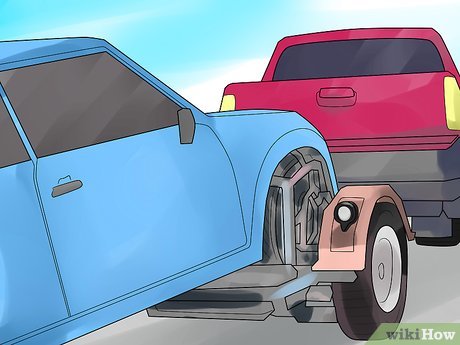
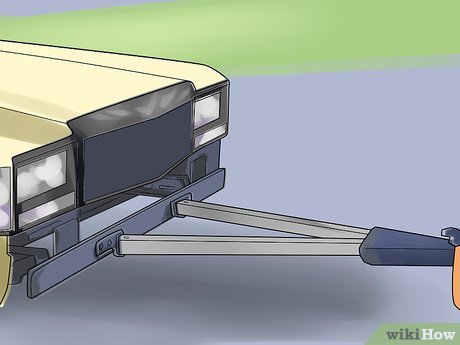
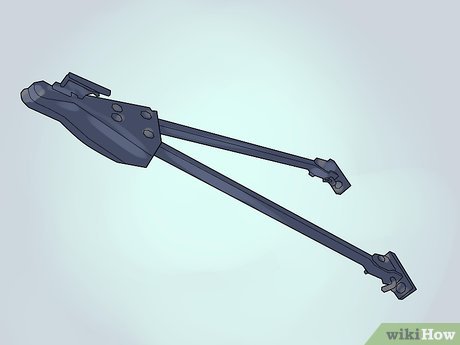
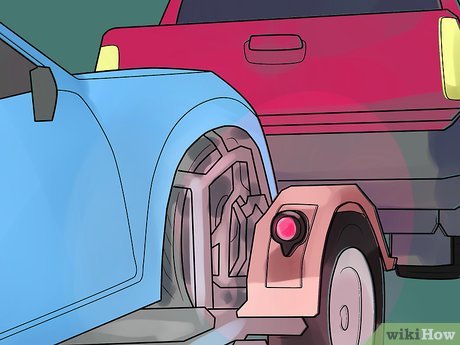
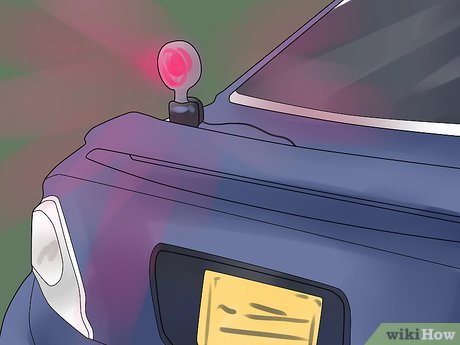
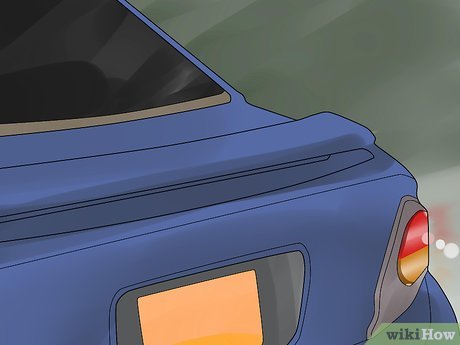
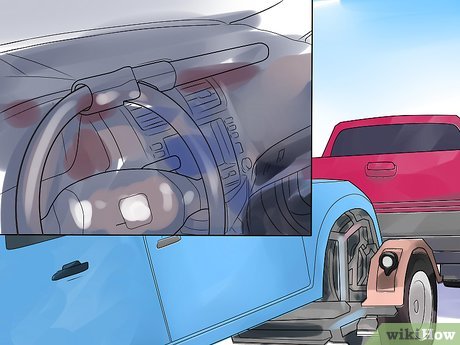
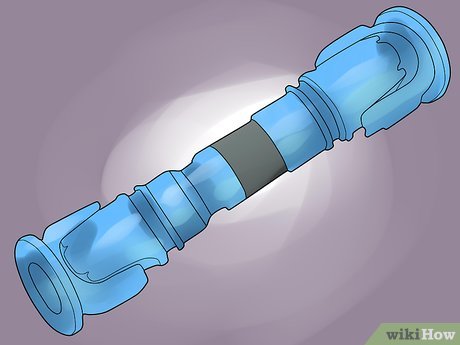
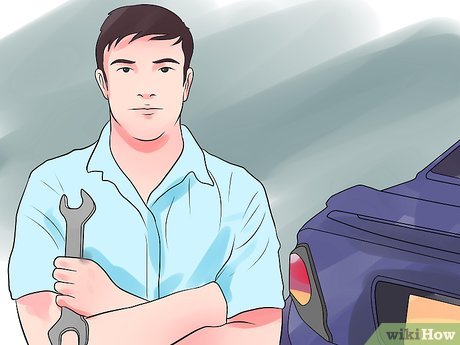
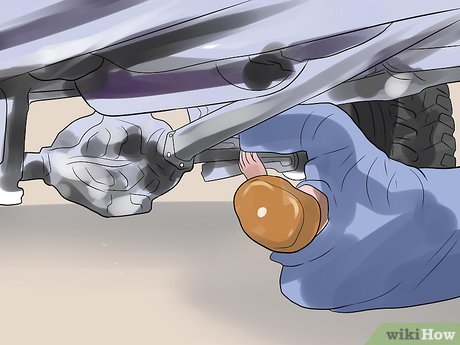
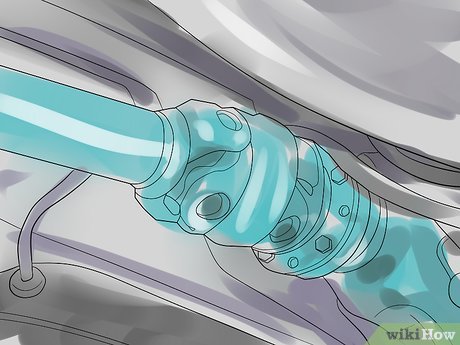
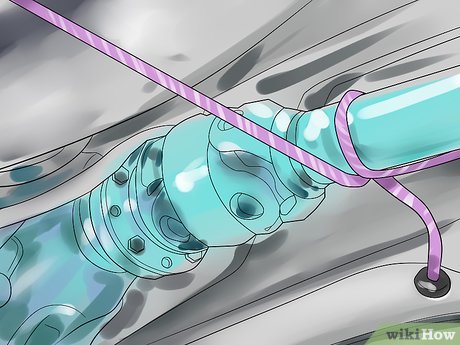
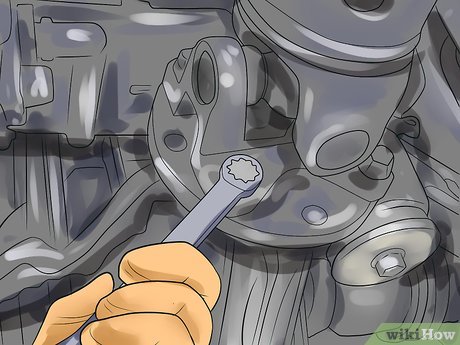
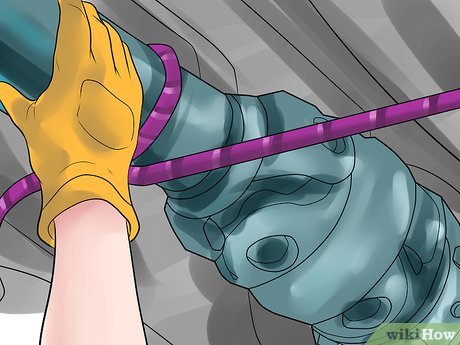
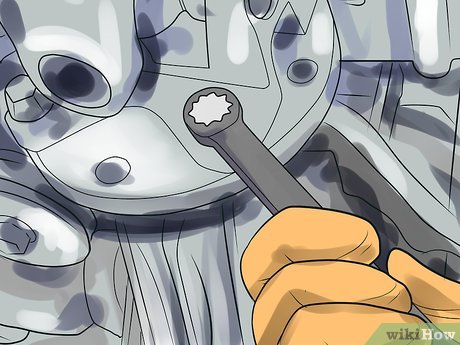
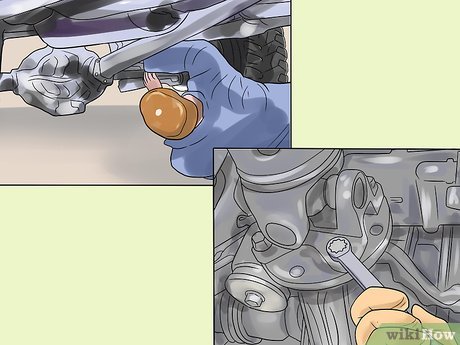
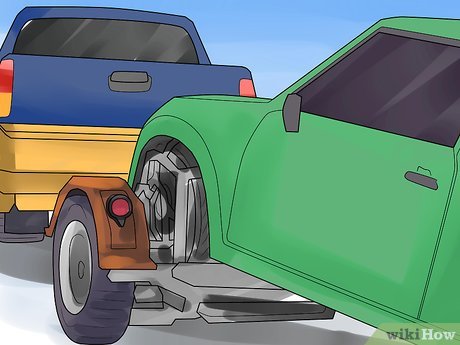
 How to Select a Trailer Hitch
How to Select a Trailer Hitch How to Trailer a Horse
How to Trailer a Horse How to Sell a Trailer
How to Sell a Trailer How to Save Money on Motorcycle Trailer Rentals
How to Save Money on Motorcycle Trailer Rentals How to Load a Trailer
How to Load a Trailer How to Hook Up a Tow Dolly and Lights to a Car
How to Hook Up a Tow Dolly and Lights to a Car